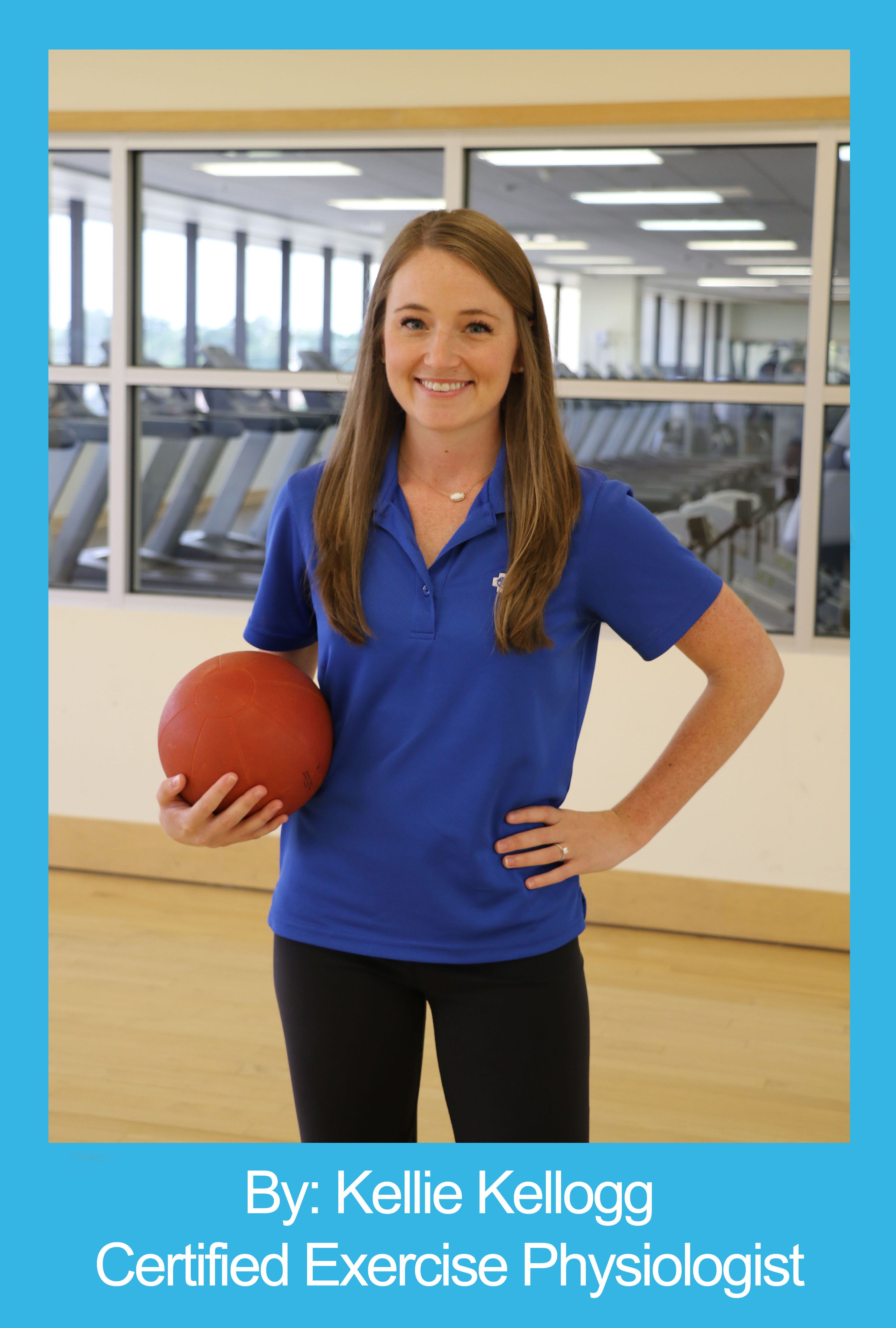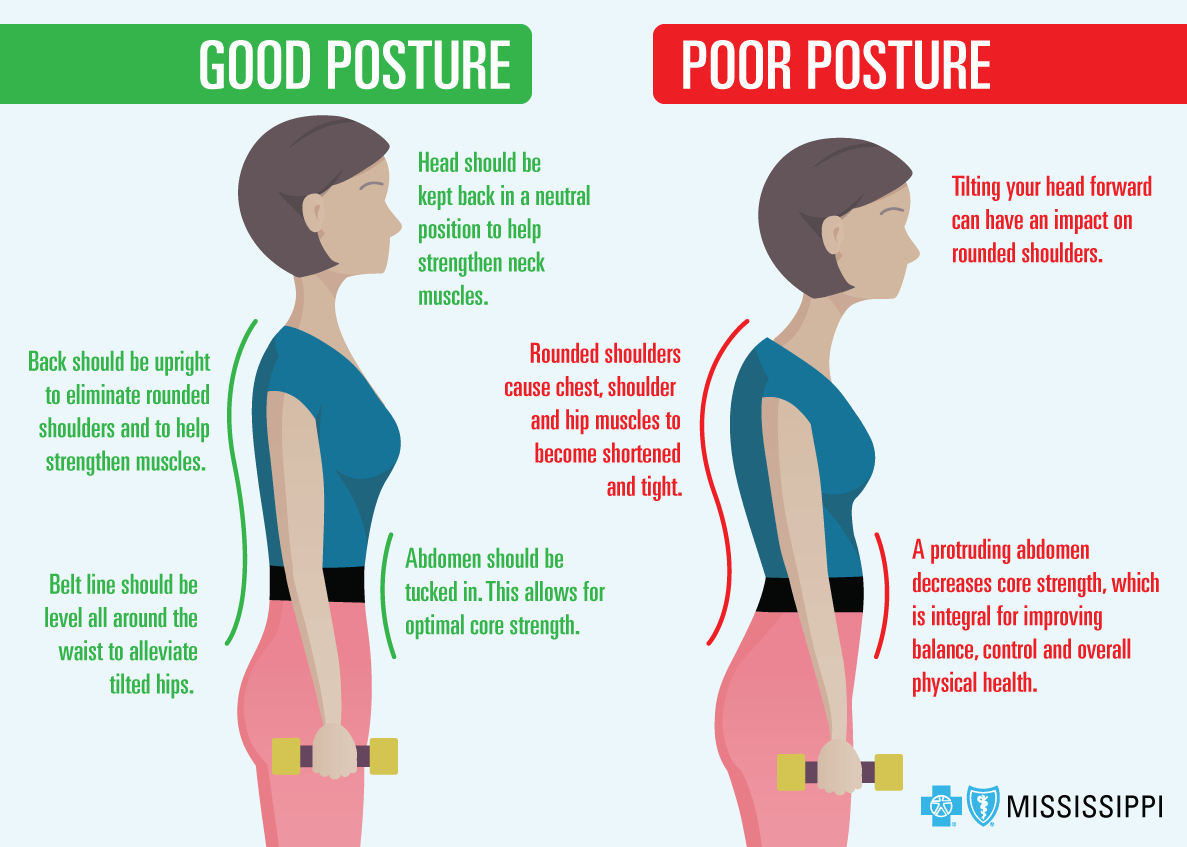Make Good Posture a Priority

Sit up straight, stand up tall, don’t slouch… we’ve all heard this! We know maintaining good posture is important for a healthy back, joints and ligaments. But how often do you think about your posture during exercise, especially during strength training? One of the most important components of strength training is having good posture. Your posture affects many aspects during an exercise such as breathing, proper form and injury prevention.
So, how does posture affect breathing? Well, think of it this way- the more you slouch, the more compressed your lungs become. Try taking the deepest breath possible while slouching over… now sit/stand up straight and take the deepest breath possible. What a difference! Since proper breathing during exercise is important to ensure your muscles are receiving enough oxygen, you can see why good posture is so important.
Proper posture affects lifting form which can help to prevent injuries. It’s all related! When you maintain the correct alignment or posture, you can ensure your lifting form will follow suit. Each individual exercise has specific form requirements, but you can guarantee posture recommendations are uniform for all strength-training exercises. Once your muscles become tired or exhausted, many people begin to lose their good posture causing bad form. When this happens, injuries become more likely.
So, here are a few basic tips to help improve and maintain proper posture:
- Strengthen your core: Strong core muscles keep your back healthy, hold your body upright, improve balance and enable you to move your body with greater control and efficiency.
- Eliminate rounded shoulders: Rounded shoulders are due to hours of sitting or standing slumped over. They cause your chest, shoulders and hip muscles to become shortened and tight and the muscles of your upper and middle back to become weakened. Work on strengthening your upper back muscles as well as consistently stretching your chest and shoulders to help alleviate rounded shoulders.
- Alleviate tilted hips: Look at your belt line from the side. The belt should be level all the way around the waist. If your belt line is higher in the back and lower in the front, you need to strengthen the weak muscles in your hamstrings, glutes and abs, while improving the flexibility of your thighs and hip flexors.
- Keep your head back: When viewed from the side, your ears should be above your shoulders. Spending hours looking at a computer, driving or watching TV, your head begins to naturally push forward which can also have an impact on rounded shoulders. Focus on holding your head back in the neutral position and strengthening your neck muscles.
Make posture a priority every day, including during your strength-training routines!





 Women's Health
Women's Health Eat Healthy
Eat Healthy Exercise
Exercise Health & Wellness Articles
Health & Wellness Articles